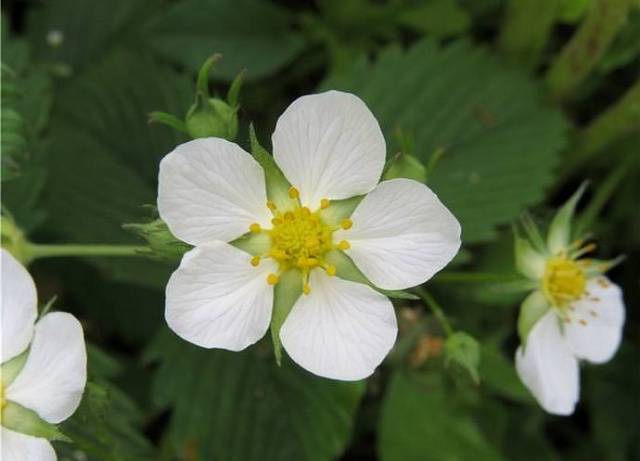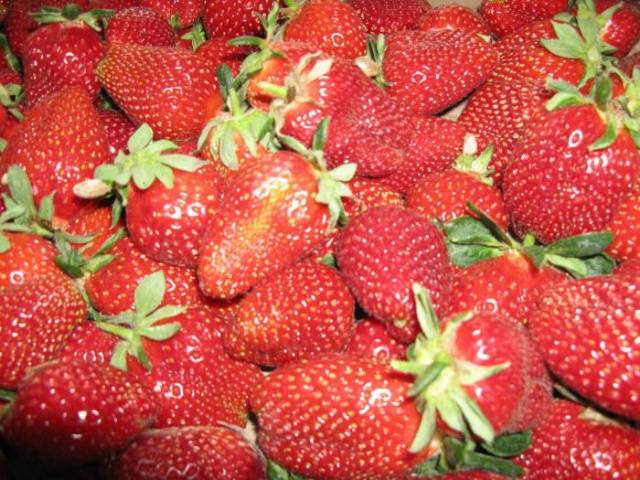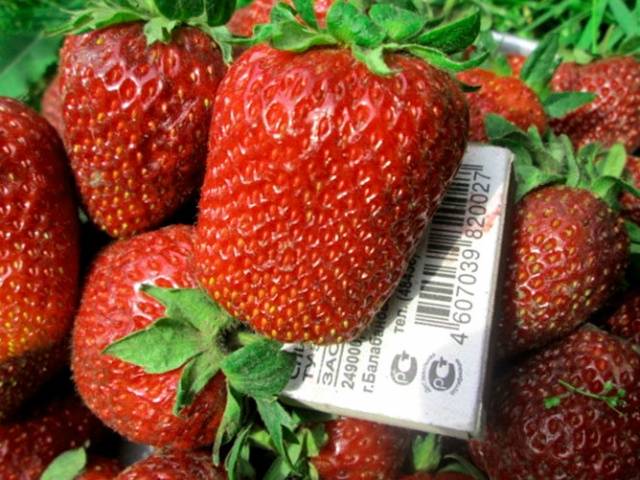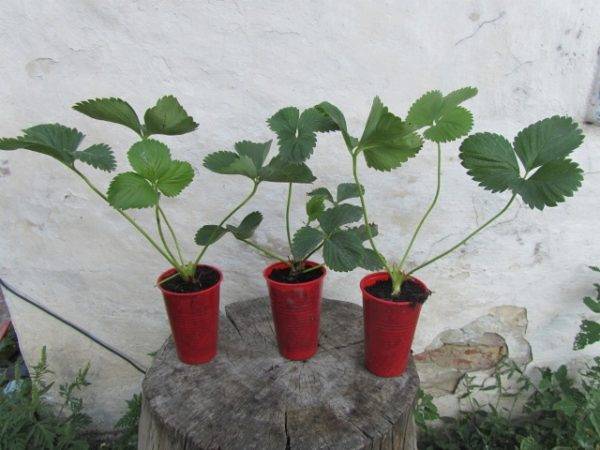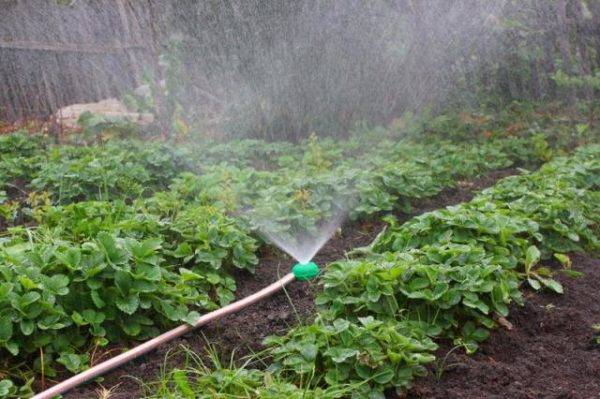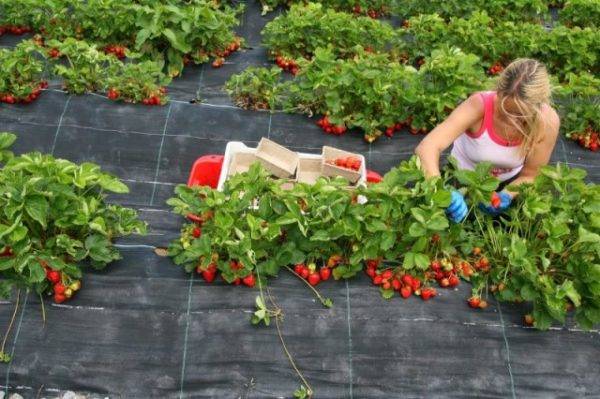Content
Gardeners who are deeply involved in crops such as strawberries try to find varieties that do not require much labor, but are famous for a bountiful harvest. The range of varieties is very large today. Many interesting varieties have been created by breeders, but the so-called oldies, tested for more than a dozen years, are not inferior to them.
Marshal strawberries are one of the oldest varieties that are very popular among gardeners due to their ability to adapt in any climatic regions of Russia. But most importantly, tasty and aromatic berries for universal use. The peculiarities of cultivating the variety will be discussed.
A bit of history
Marshall strawberries are one of the American selection products. The author is the breeder M. F. Well, who created garden strawberries at the end of the nineteenth century. Due to its amazing taste, the variety quickly gained popularity among Americans, and then began a triumphant march around the world.
Marshal strawberries came to Russia half a century later, after the Second World War ended. The Russians highly appreciated the variety's ability to adapt to harsh climatic conditions and the ability to produce a stable harvest of unusually tasty berries.
Description
Strawberry variety Marshall of American selection refers to plants with medium early ripening. It is recommended to grow in any regions of Russia, only in the zone of risky farming it will be necessary to cover the plantings.
Features of the bushes
- The Marshal variety is a plant with a powerful and spreading structure. The height of the bush is about 15 cm.
- The root system is strong.
- Stems are erect, thick. The strawberries have many large, light green, umbrella-like leaves. The berries are protected from the rays of the scorching sun and from feathered sweets.
- Strawberries, according to the description and reviews of gardeners, are distinguished by thick peduncles with an abundance of large white flowers with bright yellow hearts. They rise slightly above the leaves. As the berries are poured, the peduncles bend to the ground.
- Each strawberry bush produces a large number of whiskers over the summer, so there are no problems with reproduction.
Berries
Marshal strawberries are large, weighing 40 to 60 grams. Although there were also record holders of a larger mass. The berries are shiny, scarlet. Interesting in the variety is the form by which it is determined: on wedge-shaped fruits, the top with a small nose pressed into the middle.
Marshal strawberries are medium density, sweet, with a little acidity. On the cut, the pulp is light red, there are no internal cavities and voids. The fruits are juicy, with a bright strawberry aroma. Achenes are yellow (they can be clearly seen in the photo), depressed, they are not felt when eaten.
As gardeners note in the reviews, the Marshal strawberry variety begins to ripen in June. One bush, when favorable conditions are created, gives almost a kilogram of fruit.
Characteristics of the variety
Russians fell in love with strawberries not only for their taste, but also for their characteristic features. The Marshal variety, according to the description, gardeners reviews, has obvious advantages. Let's talk about them now.
Benefits
- High and stable yield, especially in the first year after planting bushes.
- Plants easily take root, are able to quickly adapt to the conditions of the region, calmly endure temperature extremes.
- Early ripening and long-term fruiting.
- Excellent taste of Marshall strawberry and versatility of application increase the popularity of the variety.
- Large leaves save the berries from the sun and voracious birds.
- Does not require special feeding. The Marshall strawberry variety is drought tolerant, with little to no drop in yield.
- The plant is frost-resistant, which makes it possible to grow it in any climatic conditions.
- Marshall strawberries are resistant to strawberry diseases, although preventive measures should not be neglected.
If we talk about the shortcomings, then these are:
- low transportability of fruits;
- a decrease in fruiting already in the second year, so the beds need to be broken annually.
Some gardeners consider the Marshal strawberry varieties to be high in formation and rooting of rosettes. During the growing season, you have to spend time removing them.
As you can see from the description, characteristics, reviews of gardeners and photos sent by them, the Marshall strawberry variety can be safely called ideal.
Agrotechnics
It is not difficult to grow Marshal strawberries, since agrotechnical standards are not much different. Spring plantings are successful. Over the summer, the bushes not only take root, but also give a good harvest.
The variety is propagated by seeds, rosettes and dividing the bush. All three methods are justified. Strawberries are planted with the onset of stable positive temperatures.
Where is it better to plant
Marshall strawberries thrive on open, sunny ridges and fertile soils. When choosing a place for planting a variety of American selection, you need to take into account predecessor crops, it is best to plant a variety after:
- radishes, radishes, salads and spinach;
- dill, legumes and parsley;
- turnips, carrots and celery:
- onions and garlic;
- tulips, daffodils and marigolds;
- mustard and phacelia.
Many of these crops can also be planted between strawberry bushes.
Seats
Strawberry ridges need to be formed especially carefully. Clayy and not drained damp areas are best suited for planting the Marshal variety, as gardeners write about in reviews. It is good to create ridges on low hills so that the earth can warm up from all sides. Ridges are placed in illuminated places in the south-north direction.
The soil for strawberries is prepared in the fall. Organic fertilizers such as compost or humus, peat, and sand and wood ash are added. During the digging, the roots and all plant residues are selected. If phacelia or mustard grew on the site, then they are not pulled out, but embedded in the soil.
Planting strawberries
As noted, Marshal strawberries can be propagated by seed, root division and rosettes. Sowing seeds is carried out in February and seedlings are grown in the traditional way. Seedlings are planted after the establishment of positive temperatures.
By dividing the bush, you can propagate strawberries in early spring, and with rosettes - as they form. Spring planting allows you to get viable and fruiting plants. In addition, such plants grow a powerful root system over the summer and tolerate winter well.
Gardeners can plant bushes:
- staggered;
- in one line;
- in two lines.
As the strawberries grow a lot, there must be sufficient space between them.
You need to know
If a gardener decides to seriously tackle such a crop as strawberries, you need to remember:
- Strawberries are returned to their old place no earlier than 3-4 years later. The fact is that spores of fungal diseases have high strain activity. In addition, ectoparasites can remain in the ground for a long time.
- You need to be careful with nitrogen-containing fertilizers, as they contribute to the growth of green mass, and dramatically reduce the formation of peduncles. In no case should you overdo it.
Care features
There are no special requirements for growing the Marshall strawberry variety. All events are traditional, although some nuances still exist:
- According to the description and reviews of gardeners involved in the culture, the plant is drought-resistant. But you do not need to rely on this, watering should be regular.
- As for feeding, the Marshal variety responds well to organics: infusions of mullein, chicken droppings, green grass and nettle. Feeding strawberries four times: in early spring, before flowering, at the time of pouring berries and after harvesting. This procedure is combined with watering and loosening the soil. If the shoots become thin, then the strawberry bushes of the variety are spilled with an infusion of wood ash, and the leaves are powdered with a dry composition. In addition to root feeding, foliar feeding is encouraged. They are carried out with ammonia, boric acid or iodine. Dissolve 1 tablespoon of any substance in 10 liters.
- To prevent diseases and destroy pests, special preparations are used. Gardeners advise planting fragrant green herbs, as well as marigolds and calendula, between Marshal strawberry bushes. Any feeding and processing with chemicals is stopped a month before harvesting.
- To obtain a harvest, it is necessary to remove excess mustache and yellowing leaves on fruiting bushes.
- In autumn, after the end of fruiting, the leaves are cut off. This work must be done carefully: be sure to leave hemp at least 3 cm, since flower buds form at this height. For the winter in harsh conditions, planting is covered.
The Marshal variety is easy to grow, the main thing is to take into account the peculiarities of plant development and comply with agrotechnical standards.

